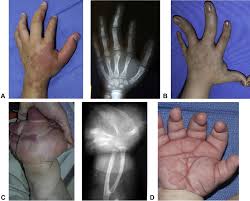CLOVES Syndrome:

Researchers believe that CLOVES Syndrome is caused by mutations in a gene called PIK3CA and less than 200 cases are believed to have been reported worldwide.
- CLOVES Syndrome, in which the letters stand for: Congenital; Lipomatous; Overgrowth; Vascular malformations; Epidermal nevi and Spinal/skeletal anomalies/Scoliosis, is very rare condition.
- It is a rare genetic disorder.
- It is caused by mutations in a gene called PIK3CA which makes one of the proteins in an enzyme called PI3K, which is involved in many important functions in a cell.
- Mutations in the PIK3CA gene may cause the PI3K enzyme to become overactive, which may cause cancer cells to grow.
- PIK3CA gene mutations have been found in many types of cancer, including cancers of the breast, lung, ovary, stomach, brain, colon, and rectum.
- CLOVES Syndrome is an overgrowth disorder, part of a larger group of similar disorders called PIK3CA-related overgrowth spectrum or PROS.
- The mutations in the PIK3CA gene are believed to occur spontaneously in the womb.
- It is not hereditary and cannot be passed on.
- Symptoms of CLOVES Syndrome
- Growth of Soft masses of fatty tissue on the abdomen, back, sides and buttocks.
- Vascular or blood vessel anomalies such as dilated veins that may be seen in the chest, arms and legs and that may pose a risk of blood clots
- Large and wide hands or feet, with large gaps between fingers and toes; ‘port wine stain’ birthmarks;
- Spinal problems such as scoliosis or a tethered cord; kidney problems; skin abnormalities such as raised bumps,
- Treatment: There is no cure as yet for CLOVES syndrome. However, with the right diagnosis, healthcare providers can help patients manage symptoms.




